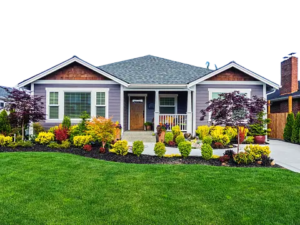the cold days of winter, the sun begins to show its face again. Summer is a great time for picnics and barbeques. It is the best time to hang out in the garden, smell the flowers, and just relax. If you think that preparing your garden or yard for the summer is daunting, here are some tips on how you can make the task lighter:
- Get rid of unwanted elements. Get rid of visible debris, rubbish, leaves, twigs, weeds and sticks. Do not be afraid to get your hands dirty. Grab your stiff brush and rake and start clearing the area. To get rid of weeds, you can use a trowel. You may need to use a hoe if the weeds have deeper roots. Stores like Tradefix Direct would have other tools that may be useful for gardening. As much as possible, you should avoid using weed killers since they can jeopardize the growth of neighboring plants.
- Use fertilizer. When you have cleared the area and gotten rid of the weeds, you can apply fertilizer and manure. Work them into the soil with a spade and a pitchfork. Fertilizing the soil after the winter season is necessary. You have to replenish the soil with nutrients so you can grow vegetables, flowers, and plants again.
- Plant herbs that can withstand extreme heat. Rosemary, oregano, sage, and English thyme are all drought-tolerant herbs. They are great for the summer season since they do not require frequent watering. However, you still have to water them on a regular basis until they have established their roots.
- Plant pumpkin seeds. If you plant pumpkins in the summer, they will be ready by the time Halloween arrives. Pumpkin seeds usually start to sprout seven to ten days after you plant them. Make sure that you leave room for their vines to develop and spread out. After three weeks, you can expect yellow flowers to appear. Once these flowers are pollinated, they start to turn into pumpkins.
- Plant vegetables that thrive in the heat of the summer. These vegetables include eggplants, cucumbers, corns, green beans, peppers, okra, tomatoes, yellow squash, zucchinis, and melons. They can survive even if you do not water them frequently.
- Check your irrigation systems. See to it that you repair any leaks in drip irrigation hoses or broken sprinkler heads. Conserve water by only watering the right places. Do not water hard landscapes or unused spaces. To find out if there is water runoff, you can turn on your sprinkles for a while and observe your lawn.
- Install borders. You can use a half-mooned spade or an edger tool to dig shallow troughs along your garden or yard. This would create sharp lines between your flower or plant areas, and make the area more attractive. To ensure that the lines are straight, you can attach some string to wooden pegs and then hammer them into your lawn. For added sophistication, you can install permanent edging along the borders of your flowerbeds with stone, brick, or timber.
- Varnish your yard or garden furniture. Varnishing your outdoor furniture makes them more attractive as well as more protected against the external elements.






Leave a Reply
You must be logged in to post a comment.